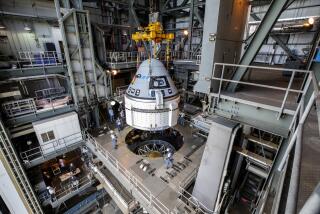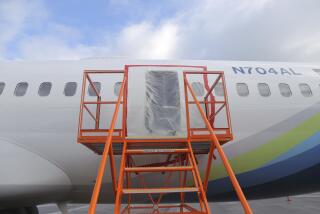NASA Baffled by Strange Reading on Fuel Line of Shuttle Power Unit
KENNEDY SPACE CENTER, Fla. — NASA struggled Saturday to understand unusually high pressure readings in a fuel line for one of the shuttle Columbia’s three auxiliary power units.
The units, called APUs, generate power to drive hydraulic pumps that supply pressure for Columbia’s critical hydraulic systems, including the landing gear and nose-wheel steering.
Mission operations director Lee Briscoe said the problem could be a bad pressure sensor, contamination on that sensor, instrument trouble or a blocked fuel line.
He stressed that it is too soon to say whether the affected APU might be in danger of shutting down. If it does, Columbia will have to come home early.
The shuttle’s 14-day research mission began Friday.
National Aeronautics and Space Administration flight rules require three working APUs. As of Saturday, all three of Columbia’s APUs were working.
“We really don’t know what we have,” Briscoe said. “The system appears to be working . . . right now.”
Later Saturday, Mission Control asked the crew members to open a valve in the APU fuel line to see how that would affect the pressure readings.
Throughout the day, Columbia’s five astronauts, trying not to ruin fragile crystals growing on board, tiptoed around the shuttle like cooks protecting their souffles.
The astronauts took turns pedaling on a stationary cycle equipped with a vibration absorber. Muscles become flabby in weightlessness, which is a liability if an emergency requires speed and strength.
Pilot Andrew Allen and Charles (Sam) Gemar also slipped one at a time into a waist-high sack that, by reducing pressure, forces blood from the top of their bodies into their legs to simulate gravity.
Doctors believe that repeated sessions in the vacuum sack can help prevent dizziness at the end of a flight, especially a long one like the current mission.






